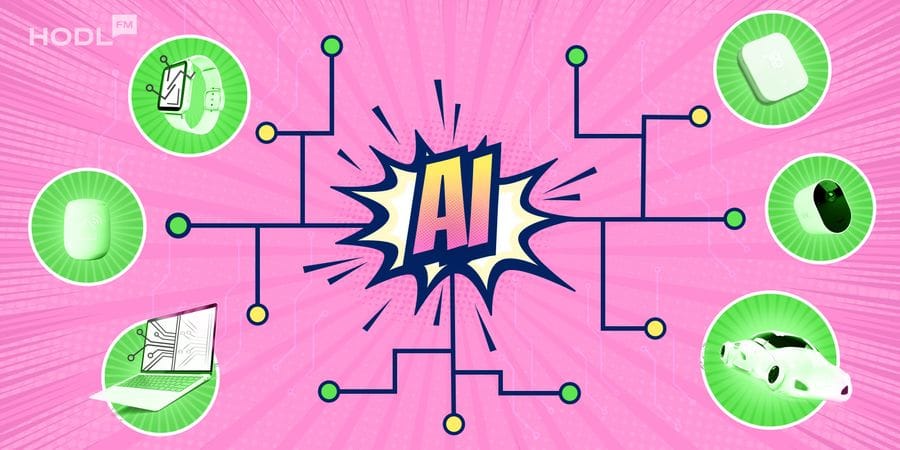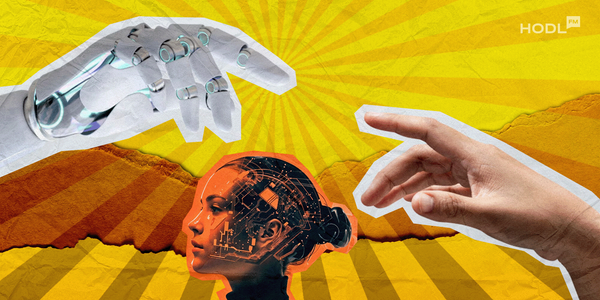While many people fear that artificial intelligence will take over the world, they simultaneously fail to realize that it has already become a part of our daily lives. As per the latest findings from the IBM Global AI Adoption Index 2022 report, 35% of companies reported using AI in their business. But that’s not all! An additional 42% of companies are eagerly exploring its potential. AI is always one step ahead of us, blending seamlessly into our lives. But hey, at least it’s making things more convenient and entertaining, right? Let’s dive into some of the most common artificial intelligence examples in everyday life.
Overview of Artificial Intelligence
Artificial Intelligence (AI) is like the superhero of the tech world, donning a cape and flexing its digital muscles to perform tasks that would make regular machines blush. It has applications across various industries, including healthcare, education, security, and automobiles. With AI in the mix, industries become playgrounds for innovation. It transforms how we live and work, enabling automation, personalization, and data-driven decision-making. It’s a high-tech revolution that promises to change the world one byte at a time!
AI in Automobiles
AI is revolutionizing the automotive industry by enabling a range of advanced capabilities in vehicles. “From enabling autonomous driving to predictive maintenance, AI is transforming the driving experience. It’s taking us on a wild ride full of high-tech gadgets, and ensuring enhanced safety, efficiency, and convenience.
Virtual Assistants
AI virtual assistants enable drivers to access navigation, make phone calls, send messages, play music, and control other in-car features using natural language processing. Assistants enhance convenience, safety, and hands-free operation, allowing drivers to stay focused on the road.
Predictive Maintenance
AI is used in predictive maintenance to optimize automobile performance, prevent unexpected breakdowns, and reduce maintenance costs. AI systems gather and analyze all data in real time, continuously monitoring the vehicle’s condition. Based on the analysis of sensor data and predictive models, AI systems provide maintenance recommendations to automobile owners.
AI in Healthcare
AI is making significant strides in transforming the healthcare industry, revolutionizing the way medical professionals diagnose, treat, and manage patient care. It’s like having a doctor with X-ray vision and an army of robot assistants by his or her side. By harnessing the power of AI, healthcare professionals can deliver more precise diagnoses, enhance patient monitoring, optimize workflows, and ultimately improve patient outcomes.
Disease Diagnosis and Treatment
With access to vast amounts of medical data, AI algorithms can analyze symptoms, medical records, and imaging results to assist in accurate and timely diagnoses. Researchers at John Radcliffe Hospital in Oxford have developed an AI diagnostic system that outperforms doctors in detecting heart disease, proving more accurate in 80% of cases. Additionally, artificial intelligence has shown the ability to determine the risk of developing age-related diseases such as cancer, reports The Daily Mail.
Robotic Surgery
AI is used in robotics surgery to enhance the precision, efficiency, and safety of surgical procedures. AI algorithms can analyze preoperative medical data, track the movements of robotics surgical instruments, analyze postoperative data, and provide real-time feedback to the surgeon.
AI in Education
AI has stormed into the world of education like a brainy tornado, shaking up the way we teach and learn. With its super-smart machine learning algorithms, AI makes studying feel as customized as a tailored suit, adapting to each student’s individual needs. Intelligent tutoring systems use AI algorithms to analyze student performance, examine learning strategies, and offer customized learning pathways.
Automated Grading
AI-automated grading is transforming the assessment process in education by streamlining the grading of assignments, tests, and exams. With the help of AI algorithms, large volumes of student work can be efficiently analyzed and assessed.
Personalized Learning
Through the analysis of student data, AI algorithms can identify patterns, assess proficiency levels, and recommend personalized learning paths. With AI personalized learning, students have the opportunity to learn at their own pace, focus on their specific learning needs, and develop a deeper understanding of the subject.
Virtual Tutors
Virtual tutors utilize AI algorithms to simulate one-on-one tutoring sessions, delivering tailored instruction and support. They are available 24/7, providing students with on-demand access to personalized learning experiences.
AI in Business
By embracing AI, businesses can tap into an incredible resource that gives them a competitive edge. Businesses can drive innovation, improve operational effectiveness, and deliver enhanced products and services to meet the evolving needs of their customers by harnessing the power of AI.
Automated Customer Service
AI is used in automated customer service to enhance customer interactions, streamline processes, and provide efficient and personalized support. For instance, AI-powered chatbots and virtual assistants are employed to handle customer inquiries and provide instant responses. After analyzing customer inquiries, AI routes them to the appropriate department or support agent.
Fraud Detection
By analyzing vast amounts of data, AI algorithms can detect patterns, anomalies, and suspicious behaviors that may indicate fraudulent transactions or activities. AI fraud detection systems can analyze various data sources, including financial transactions, customer behavior, and network activities, to identify potential fraud across different channels.
AI in Smart Homes
AI is revolutionizing the concept of smart homes by enabling intelligent automation, personalized experiences, and enhanced control over various aspects of the living environment. AI-powered virtual assistants like Amazon Alexa and Google Assistant, with their ever-attentive ears, listen to your every command, ready to cater to your every whim. With the ability to learn and adapt, AI in smart homes provides convenience, energy savings, and seamless integration of technology into our everyday lives.
Smart Home Assistants
Smart Home assistants utilize AI algorithms to understand voice commands, perform tasks, and provide personalized experiences. With a simple voice command or smartphone, users can control lights, thermostats, security systems, entertainment devices, and more. AI smart home assistants can learn user preferences, daily routines, and behaviors to automate tasks and anticipate needs.
Automated Surveillance
AI algorithms can recognize and differentiate between various objects and activities, such as human presence, suspicious behaviors, or unauthorized access. With AI-powered surveillance systems, smart homes can analyze video feeds in real-time, identifying and alerting homeowners to potential security risks.
AI in Security
AI is like the Sherlock Holmes of the security world. It is playing a pivotal role in bolstering security measures across various domains. It is employed in video surveillance systems to monitor and analyze live feeds, enabling the identification of suspicious activities or objects.
Facial and Voice Recognition
AI-powered facial and voice recognition technologies are transforming the landscape of security. Image recognition algorithms analyze Facial features, such as the shape of the face, unique landmarks, and biometric data, to accurately identify individuals. Similarly, voice recognition algorithms analyze vocal patterns, speech characteristics, and other acoustic factors to verify an individual’s identity based on their voice.
Object Recognition
Using deep learning algorithms and computer vision techniques, AI can analyze visual data from images or video streams to detect and classify objects of interest. This technology finds applications in surveillance systems, where it can identify and track suspicious objects or activities in real time, enhancing security monitoring.
Conclusion
In summary, artificial intelligence has integrated into our daily lives much like an all-knowing neighbor, subtly improving many aspects of our everyday activities. It’s there when we’re browsing the internet, shopping online, navigating unknown streets, talking to our doctors, and even handling our banking needs.
Sure, there are ethical concerns and potential risks, but with some good old-fashioned human supervision, teamwork, and a dash of ethical pondering, we can unleash the power of AI for the future. Let’s embrace the possibilities and strive to make this AI journey as beneficial as possible!



